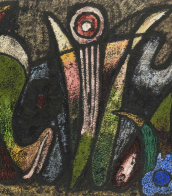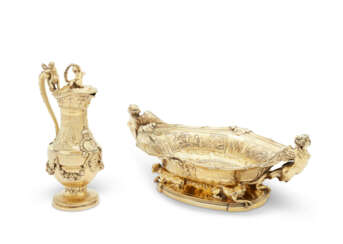achille devéria

Achille Devéria, full name Achille Jacques-Jean-Marie Devéria, was a French painter, illustrator and lithographer, the older brother of the Romantic painter Eugène Devéria (1805-1865).
Devéria became a successful book illustrator, making drawings for Johann Goethe's Faust, Cervantes' Don Quixote, and Charles Perrault's fairy tales, while gaining fame for his erotic miniatures. Deveria's work was dominated by light, sentimental or frivolous subjects. But he was also a talented and popular portraitist, painting portraits of many famous writers and other notable contemporaries.
In 1849, Deveria was appointed head of the engraving department of the National Library.


Achille Devéria, full name Achille Jacques-Jean-Marie Devéria, was a French painter, illustrator and lithographer, the older brother of the Romantic painter Eugène Devéria (1805-1865).
Devéria became a successful book illustrator, making drawings for Johann Goethe's Faust, Cervantes' Don Quixote, and Charles Perrault's fairy tales, while gaining fame for his erotic miniatures. Deveria's work was dominated by light, sentimental or frivolous subjects. But he was also a talented and popular portraitist, painting portraits of many famous writers and other notable contemporaries.
In 1849, Deveria was appointed head of the engraving department of the National Library.

Johann Wolfgang von Goethe, a German polymath and writer, is celebrated as one of the most influential figures in the German language and Western culture. His vast array of works spans poetry, novels, plays, and scientific writings, reflecting his diverse interests and profound impact on various fields.
Goethe's early life in Frankfurt laid the foundation for his diverse interests. After studying law, he gained fame with "The Sorrows of Young Werther," which led to an invitation to the Weimar court. His contributions there were significant, including roles in the ducal council, mining supervision, and cultural endeavors like theater management and the botanical park's planning.
His literary achievements are vast, with notable works like "Faust" and "Wilhelm Meister's Apprenticeship," which delve into human nature and societal reflections. Goethe's "Sturm und Drang" period was marked by intense emotion and a break from traditional forms, influencing subsequent cultural movements.
Johann Wolfgang von Goethe's interest in science is equally noteworthy. He made contributions to biology, zoology, and color theory, advocating for a holistic view of nature and expressing skepticism toward restrictive scientific methodologies. His works in these areas reflect a deep desire to understand and articulate the natural world's interconnectedness.
For art collectors and experts, Goethe's influence extends beyond his literary and scientific contributions. His role in Weimar Classicism and his artistic endeavors offer rich insights into the period's cultural landscape, providing a multifaceted perspective on his legacy.
To stay informed about developments and events related to Johann Wolfgang von Goethe, consider signing up for updates. This subscription will keep you informed about new product sales and auction events related to Goethe's works and influence, offering exclusive insights for enthusiasts and collectors.








![[MUSSET, Alfred de (1810-1857)]](/assets/image/picture_3806738/a6dc8/3470724f96ccd1b2e87402872ad747681710234000jpg__fix_374_244.jpeg)
![[MUSSET, Alfred de (1810-1857)]](https://veryimportantlot.com/assets/image/picture_3806738/a6dc8/3470724f96ccd1b2e87402872ad747681710234000jpg__fix_374_244.jpeg)

















